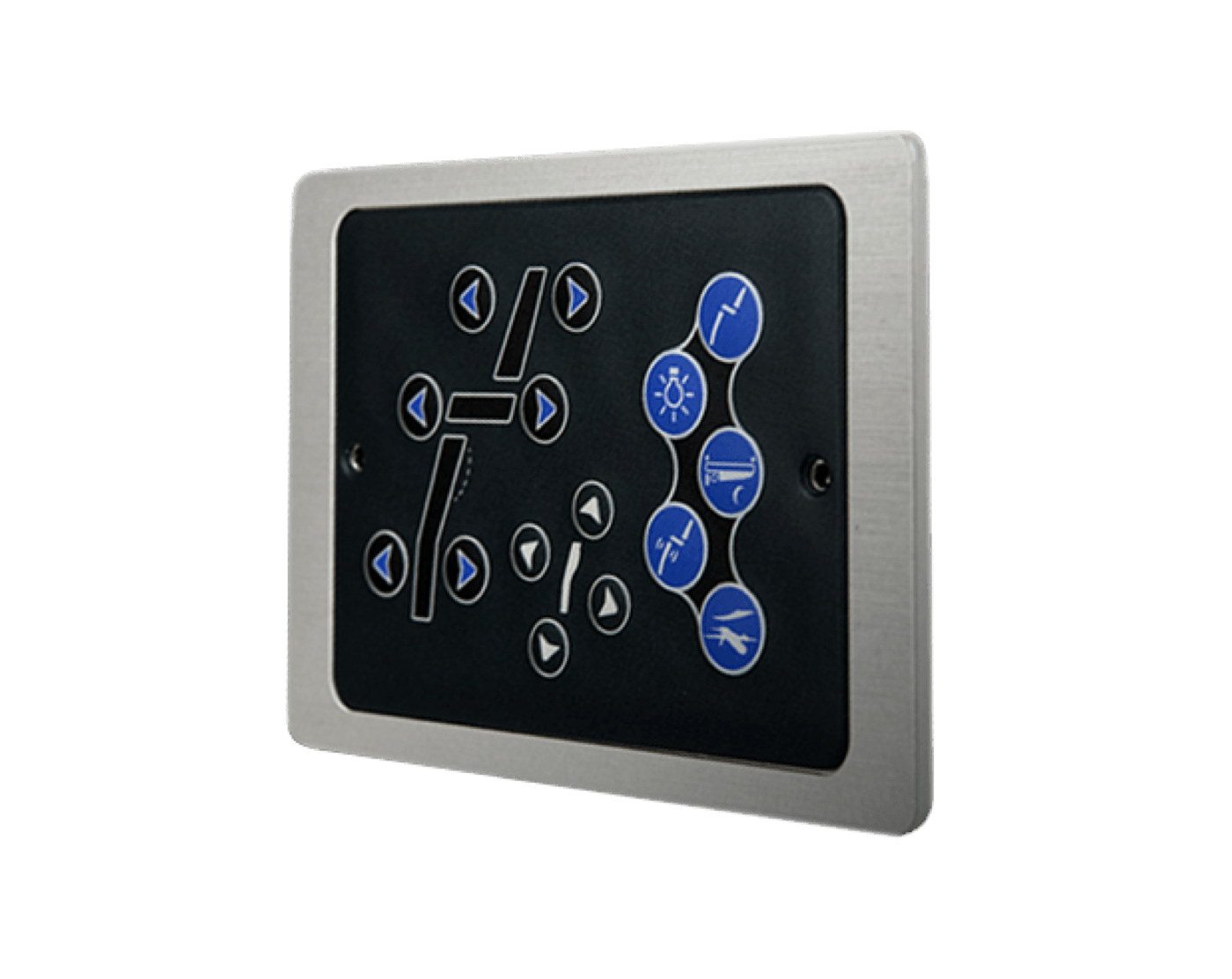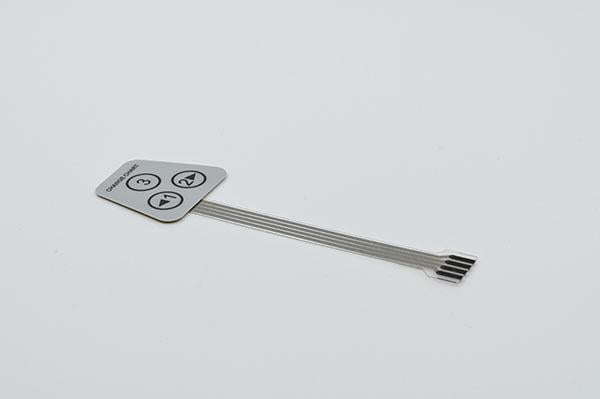Everything About Membrane Layer Switch Over: Recognizing Its Design and Performance
When you believe about the control interfaces in modern tools, membrane layer buttons frequently come to mind. Let's discover what collections membrane layer switches apart from other control systems.
What Are Membrane Layer Switches?

Membrane switches can likewise be customized regarding shape, size, and graphics, allowing makers to create special user interfaces customized to particular products. Overall, membrane buttons play a considerable duty in enhancing individual experience throughout a large array of applications.
How Membrane Switches Work
When you press a key on a membrane switch, it activates an uncomplicated yet reliable mechanism. membrane switch manufacturer. The leading layer, typically made of versatile material, presses down onto a conductive layer beneath it.
You'll observe that the responsive feedback varies based on the button design, providing either a soft click or an extra obvious action. When you release the trick, the membrane layer go back to its original position, resuming the circuit and quiting the signal. This process happens virtually immediately, ensuring a responsive user experience.
Membrane buttons are preferred due to their resilience and resistance to dirt and moisture, making them ideal for numerous applications, from family devices to clinical gadgets. Understanding this operation assists you value their widespread usage.
Trick Parts of Membrane Layer Switches
Understanding the essential elements of membrane switches is essential for realizing their capability and layout. At the core, you'll discover the graphic overlay, which offers the aesthetic user interface for users. Underneath that, there's a spacer layer that divides the circuit layers, making sure that they don't make get in touch with until pressed. The circuit layer is where the magic takes place; it contains conductive traces that complete the circuit when you press the button. An additional crucial element is the sticky support, permitting the switch to follow surfaces securely. The safety layer guards versus environmental factors and wear, extending the switch's lifespan. Each component plays a substantial role in making certain dependable performance and customer communication. By recognizing these parts, you'll get insight into exactly how membrane switches run and their significance in numerous applications.
Materials Used in Membrane Switch Design
The performance and longevity of membrane layer switches greatly depend upon the products made use of in their design. You typically encounter polyester and polycarbonate as key substrates as a result of their excellent toughness and versatility. These products resist scratches and chemicals, making them ideal for demanding settings.
The conductive layers often make use of silver or carbon, chosen for their reliability and conductivity. membrane switch manufacturer. Silver provides exceptional performance, while carbon is an economical choice. For the overlay, you may think about a matte or glossy surface, relying on your aesthetic demands and user experience
Make certain to select adhesives that withstand ecological elements like temperature and moisture. Picking the appropriate products will certainly ensure your membrane layer switch stands the test of time.
Layout Considerations for Membrane Switches
While designing membrane layer buttons, it's important to take right into account different elements that affect their performance and customer experience. Begin by concentrating on the layout and switch size; make sure they're instinctive and easy to browse. Consider the responsive feedback you intend to supply-- will users require a recognizable click or a softer touch? In addition, think about the products you'll make use of, as they'll affect longevity and aesthetic appeals.
Don't forget the graphic design; clear labeling and color contrast are substantial for presence. Confirm your style accommodates environmental aspects, like moisture or temperature level variations, which can impact performance. Finally, bear in mind the value of testing prototypes with actual users to collect comments and make necessary modifications. This iterative procedure helps you refine the design, validating it meets both functional and visual requirements effectively. By thoroughly thinking about these aspects, you'll produce a membrane layer button that enhances usability and satisfaction.
Applications of Membrane Switches
Membrane switches are flexible elements discovered in different applications, from commercial tools to consumer electronic devices. You'll see their impact in devices that require durable user interfaces and in tools that take advantage of streamlined designs. Understanding these applications aids you discover this appreciate the functionality and usefulness of membrane layer switches in day-to-day modern technology.
Industrial Devices Usage
When you're looking to improve the capability of industrial tools, membrane layer switches offer a trusted service that combines durability with straightforward design. These buttons are best for extreme environments, supplying resistance to dust, wetness, and chemicals. Accept membrane layer switches to simplify your procedures and enhance general performance.
Customer Electronic Devices Integration
In the domain of consumer electronics, membrane layer switches play a necessary duty in improving customer interaction and gadget performance. Membrane buttons likewise guarantee sturdiness and resistance to dirt and dampness, expanding the life-span of your electronic devices. By picking membrane switches, you enhance not just the capability yet likewise the design of your tools, making daily communications smooth and delightful.
Advantages and Downsides of Membrane Layer Switches
While membrane buttons supply a variety of benefits, they additionally come with some downsides that you must consider. One substantial advantage is their small design, making them optimal for space-constrained applications.

Nevertheless, there are downsides. Membrane layer buttons can have a much shorter lifespan compared to mechanical buttons, specifically under hefty use. They can likewise be less responsive, which might influence customer comments during operation. Furthermore, if go to website damaged, fixing them can be difficult and usually calls for total replacement. Inevitably, their level of sensitivity to extreme temperatures and ecological conditions may restrict their efficiency in certain setups. Balancing these advantages and disadvantages will certainly assist you determine if membrane layer buttons are the right try these out suitable for your job.
Often Asked Concerns
For How Long Do Membrane Layer Changes Commonly Last?
Membrane layer switches commonly last between 5 to 10 years, depending upon usage and environmental conditions. You'll intend to assess elements like wear, exposure to wetness, and temperature level changes to assess their long life efficiently.
Can Membrane Layer Switches Be Customized for Details Designs?
Yes, you can personalize membrane buttons to fit details styles (membrane switch manufacturer). You'll have the liberty to select colors, shapes, and formats that match your project's requirements, ensuring they blend seamlessly with your overall visual
What Is the Cost Variety for Membrane Layer Switch Over Production?
The cost range for membrane layer button manufacturing generally falls in between $1 and $10 each, depending on factors like style intricacy, amount, and materials. You can obtain quotes from suppliers to find the very best choice.

Are Membrane Changes Waterproof or Resistant?
Membrane layer buttons can be created to be water resistant or resistant, depending on products used and building and construction methods. If you need them for damp settings, assure you specify those requirements throughout the design process.
How Do Membrane Switches Over Compare to Traditional Buttons?
Membrane layer switches are usually thinner and extra flexible than traditional buttons, using a smooth style. They're usually simpler to clean and integrate, however may not offer the tactile feedback you're made use of to with mechanical options.
Conclusion
